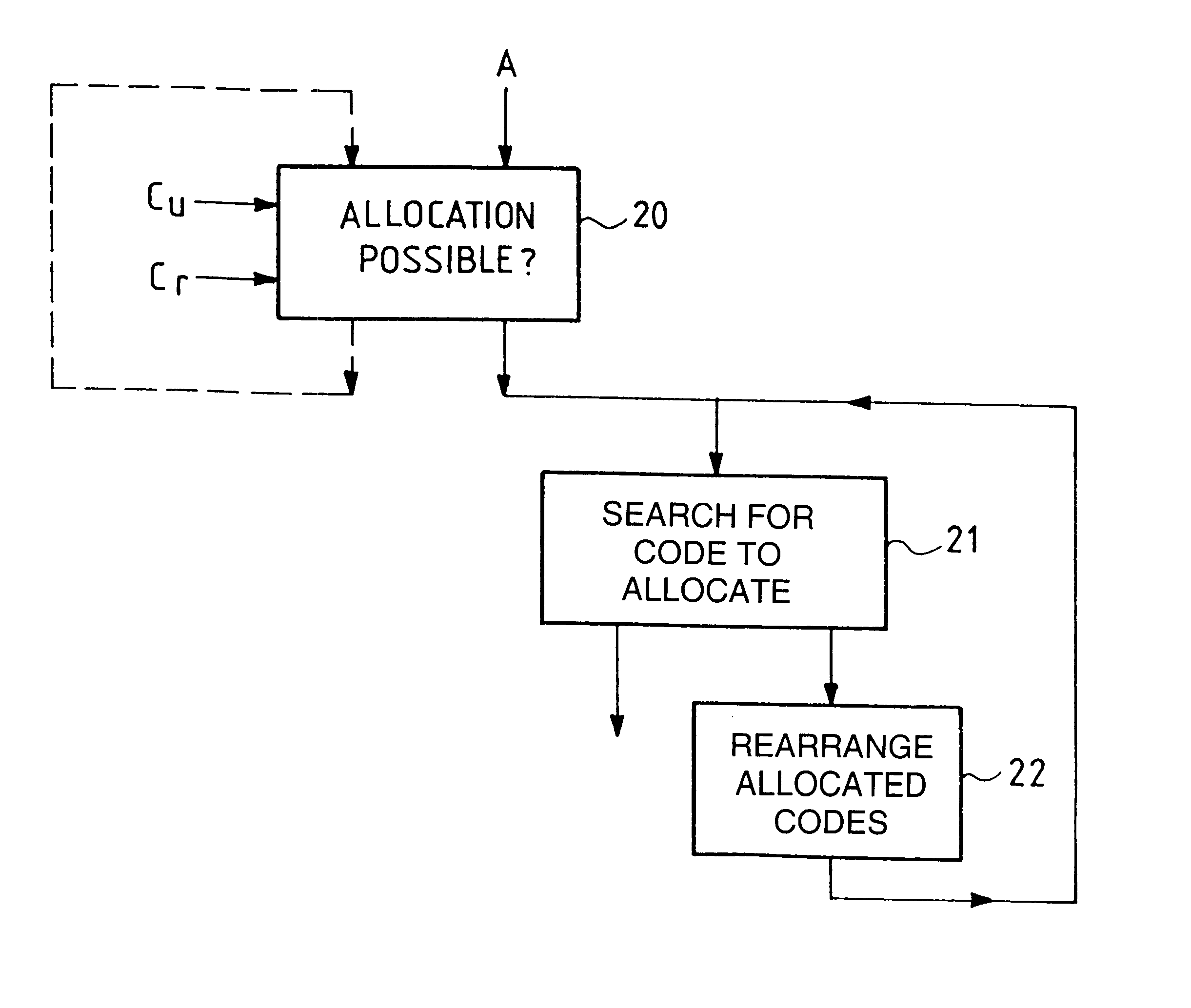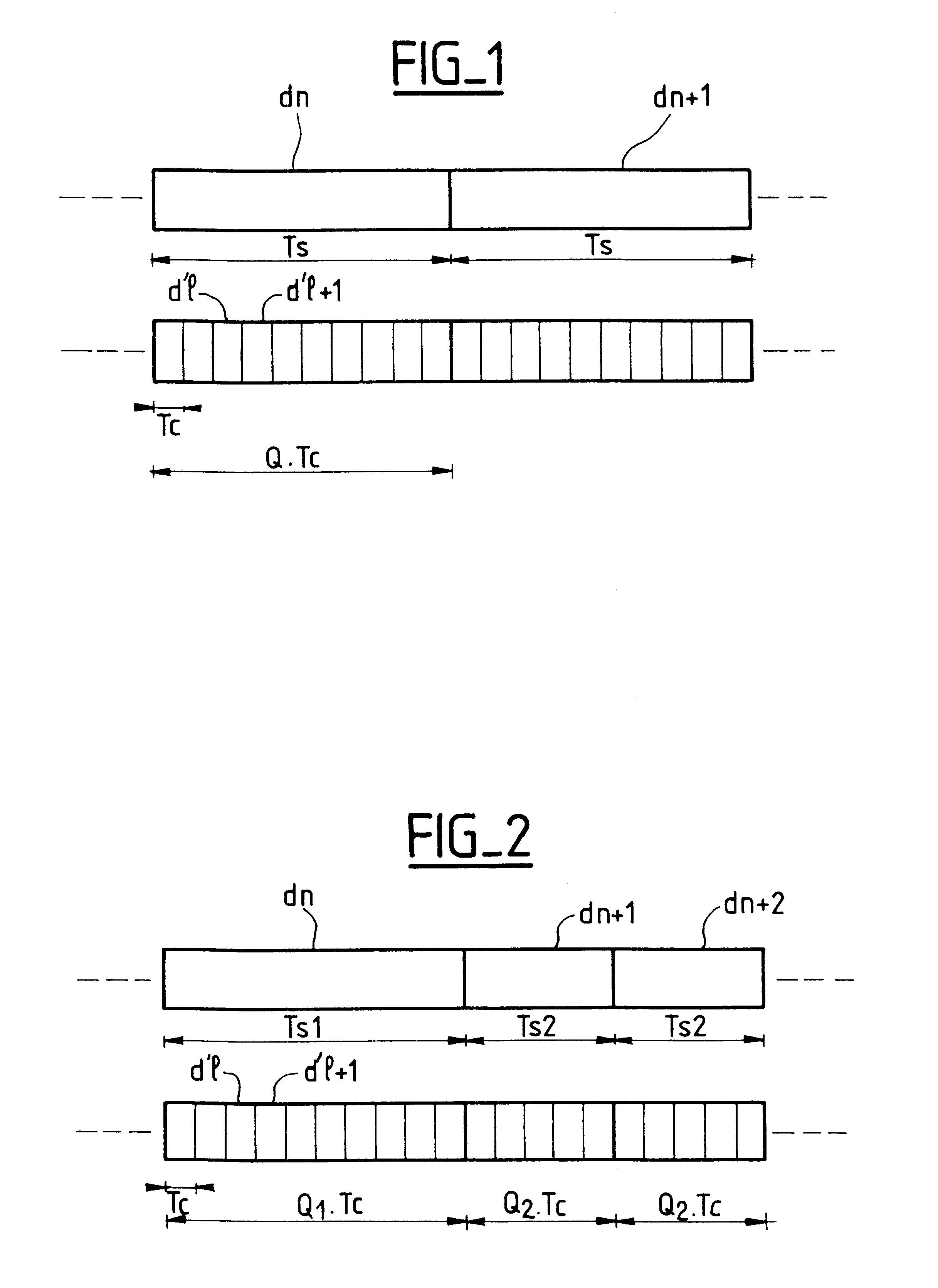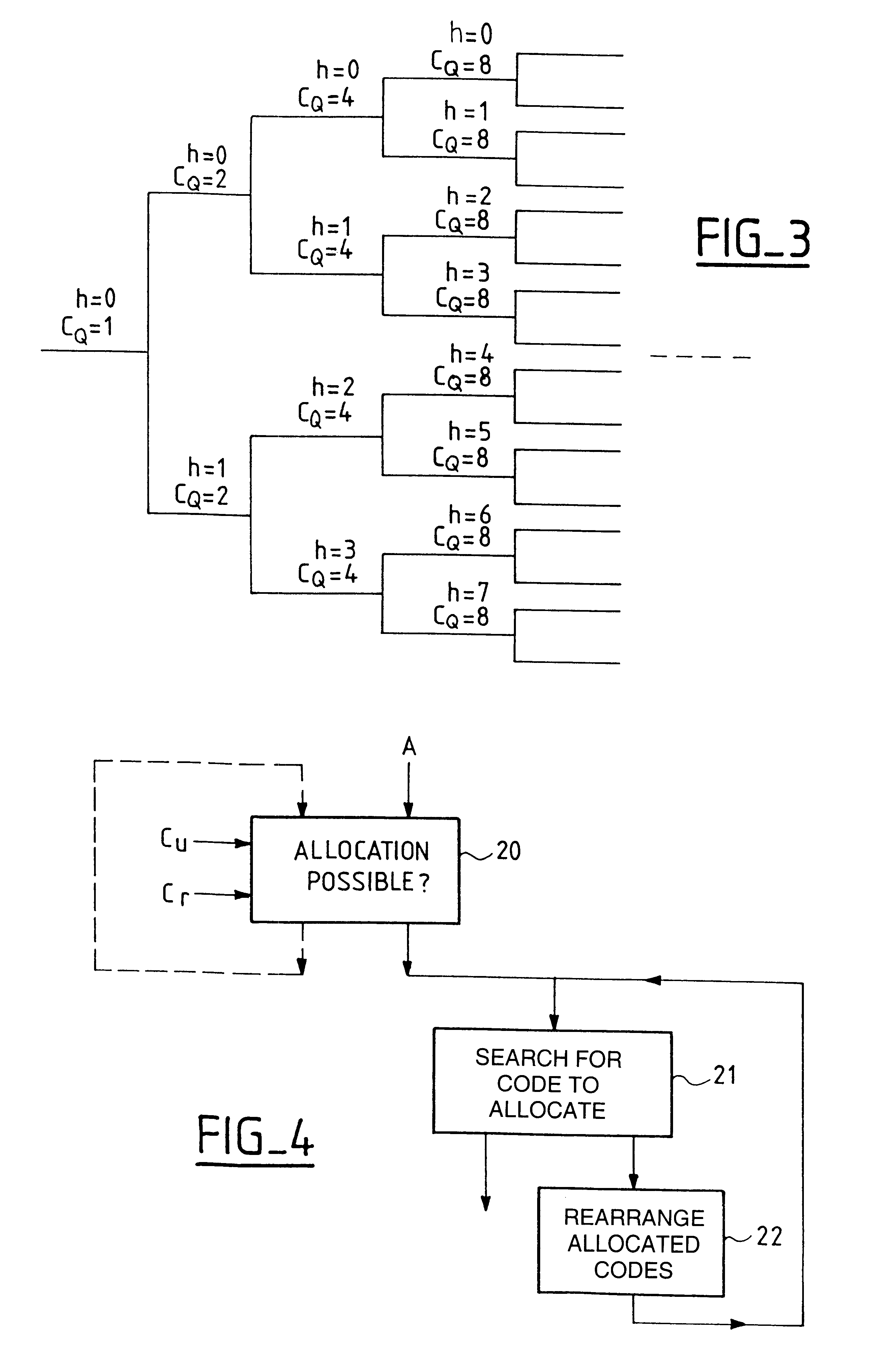Method of allocating orthogonal codes in a code division multiple access mobile radio system using codes of variable length
a mobile radio system and code division technology, applied in the direction of orthogonal multiplex, code conversion, electrical equipment, etc., can solve the problem of long operation, and achieve the effect of simple and fast method of determining
- Summary
- Abstract
- Description
- Claims
- Application Information
AI Technical Summary
Benefits of technology
Problems solved by technology
Method used
Image
Examples
Embodiment Construction
In accordance with the invention, as shown in FIG. 4, in response to a request to allocate a code of given length, denoted A, in a first step 20, whether such allocation is possible or not is determined in accordance with the tree capacity used, denoted Cu, corresponding to codes already allocated, and the tree capacity required, denoted Cr, corresponding to the requested code allocation.
If such allocation is possible, a code to be allocated is searched for in a second step 21.
If such allocation is not possible, no code can be allocated at the time in question; the allocation request can possibly be repeated later (which is shown in dashed line in the figure).
If such allocation is possible and a code is found at the end of said search, then that code constitutes the allocated code.
If such allocation is possible and no code to allocate is found at the end of said search, the allocated codes are rearranged within said tree in step 22 before proceeding to a new search for a code to all...
PUM
 Login to View More
Login to View More Abstract
Description
Claims
Application Information
 Login to View More
Login to View More - R&D
- Intellectual Property
- Life Sciences
- Materials
- Tech Scout
- Unparalleled Data Quality
- Higher Quality Content
- 60% Fewer Hallucinations
Browse by: Latest US Patents, China's latest patents, Technical Efficacy Thesaurus, Application Domain, Technology Topic, Popular Technical Reports.
© 2025 PatSnap. All rights reserved.Legal|Privacy policy|Modern Slavery Act Transparency Statement|Sitemap|About US| Contact US: help@patsnap.com



